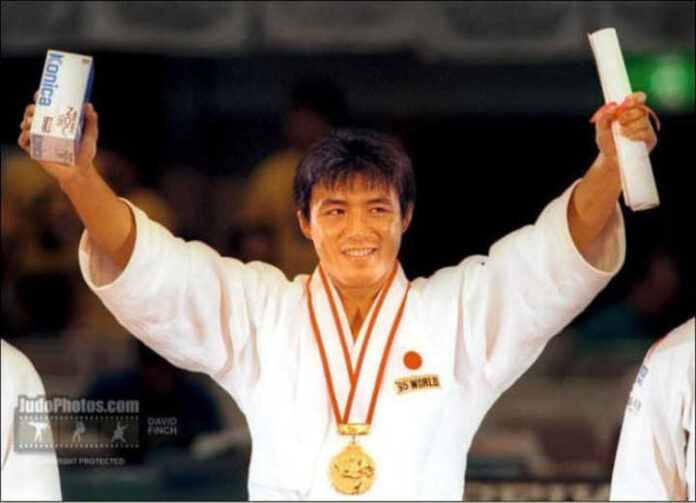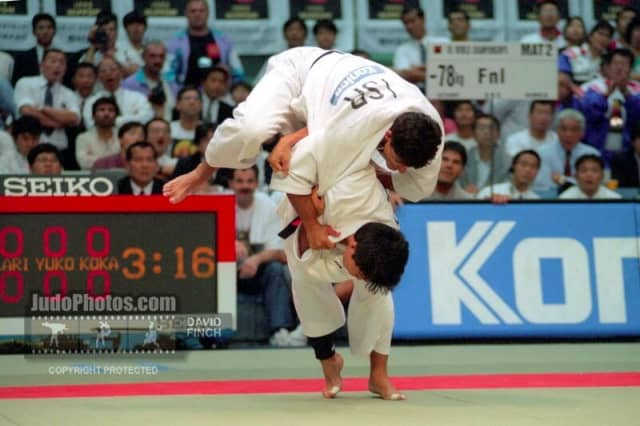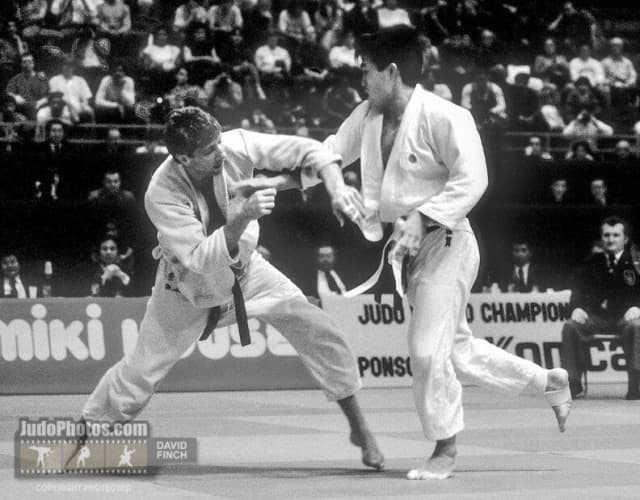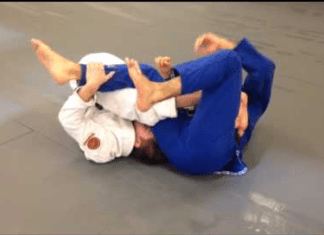
The death of legendary Japanese judo athlete and coach Toshihiko Koga, who passed away on Wednesday, March, 24. at the age of 53, has caused a stir in the martial arts community.
According to the media, cancer was the cause of death for Koga, Last year, the athlete underwent surgery after being hospitalized with the disease.
His double-handed morote-seoi-nage, one of his most famous throws, combined with his legendary ippon-seoi-nage, will always be remembered together with his saying: “I think you always have to have an open mind to take new approaches and new paths in solving problems.” He lived by this principle until he died.

He received his 9th-degree black belt from the Kodokan a day before he died.
It is certain that Toshihiko Koga will be imitated by the youth in order to replicate the tatami artists.
The entire martial arts world is saddened by the news of his death, and we join with his family and friends in conveying our most heartfelt condolences.
Thank you for the art, legend!
Toshihiko Koga
Koga was born in Saga, Prefecture, Japan. He trained at the Kodo Gakusha judo institution in Tokyo, sharpening his abilities under the tutelage of Japan’s top judoka. At age 18, when he was a student at Nippon Sport Science University, Koga won the Jigoro Kano Cup Tokyo International Judo Tournament.
At the time he won several accolades including five straight championships at the Kodokan Cup and six consecutive titles at the All-Japan Judo Championships (all in the 71 kg division).
He achieved third place in the World Judo Championships held in Essen in 1987 and was chosen to compete at the 1988 Summer Olympics, where he was defeated by a Russian competitor in the third round.
The “highlights” of his career happened at the Barcelona Games when Koga was named captain of the Japanese Olympic delegation. Unfortunately, Koga injured his left knee ligament before the Olympics, during a practice session. He couldn’t walk without holding on to someone’s shoulder, and it appeared he wouldn’t be able to compete.
Still, Koga didn’t give up and fought to take home the gold medal in a daring show that delighted his people.

After winning the 1989 and 1991 World Judo Championships, Koga went back to the Olympics in 1992, but he severely injured his left knee during a randori (sparring) session against Hidehiko Yoshida, preventing him from utilizing his best move; the Ippon Seoi Nage. He won the gold medal without sacrificing his performance, and he was presented with the JOC Sports Award by the Japanese Olympic Committee.
Koga briefly retired from competitive judo after winning gold at the Olympics, but he made a comeback with a gold medal at the 1995 World Judo Championships in Chiba, Japan.
However, he was not expected to do well in the 1996 Summer Olympics because of his previous Olympic experiences. He ended his third appearance at the Olympics with a silver medal in the -78 kg class.
Koga retired from the competition in 2000 and started coaching.
Koga’s Coaching Career
He was the head coach of Japan’s national women’s team from 2005 to 2008, and he assisted Ayumi Tanimoto in capturing a gold medal at the 2004 Athens Olympics.
He worked as a professor at International Pacific University in Okayama Prefecture from 2007 until 2014, when he became general director of the women’s judo team.
He worked hard to integrate a medical viewpoint into judo training. The reason for that because he was studying at the graduate school of Hirosaki University in Aomori Prefecture when he was 40 to obtain his medical degree.
He was also active in promoting judo and training future judokas. He founded the Koga Juku dojo in Kawasaki, which he wanted to use as a training center for other people. “I’d like to create a judoka who is respected by others,” Koga stated on numerous occasions.










































